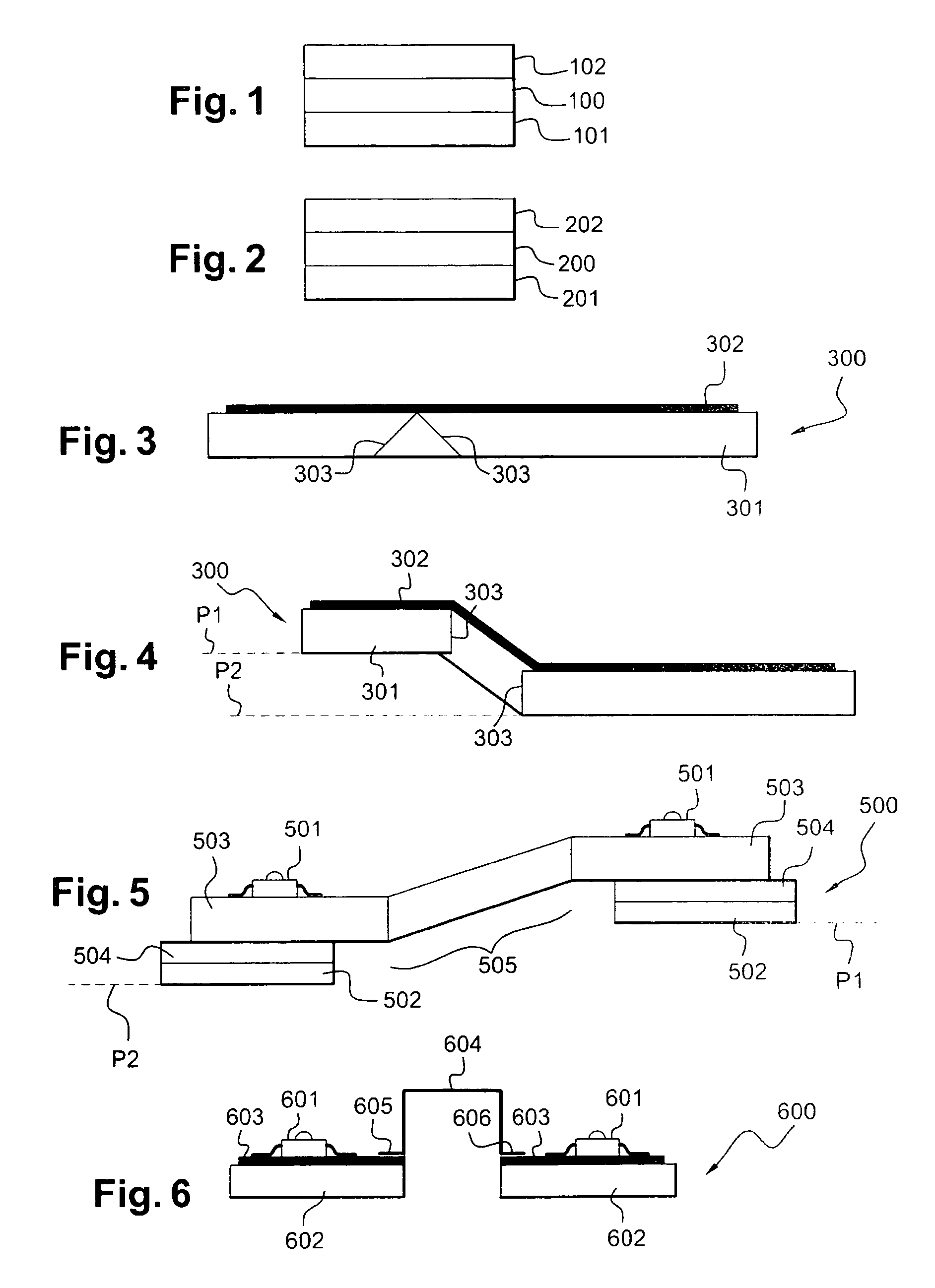Method of making a support for light emitting diodes which are interconnected in a three-dimensional environment
a technology of light-emitting diodes and supporting parts, which is applied in the direction of printed circuit manufacturing, printed circuit bendability/stretchability, printed circuit aspects, etc., can solve the problems of large cost, unoptimized arrangement of this kind in the context of industrial mass production, and the need for manual assembly
- Summary
- Abstract
- Description
- Claims
- Application Information
AI Technical Summary
Benefits of technology
Problems solved by technology
Method used
Image
Examples
Embodiment Construction
[0048]The various elements appearing in the several Figures of the drawings will all keep the same reference sign unless stated otherwise.
[0049]FIG. 3 and FIG. 4 show diagrammatically a support 300 for light emitting diodes which is used in two examples of embodiments of the method of the invention. The support 300 is a rigid substrate, which is either of the SMI type or of the FR4 type. In both cases it consists of at least one bottom layer 301 and a top layer 302, the said top layer being a relatively thick layer of copper which provides electrical continuity between the various light emitting diodes which will be disposed on it. Where the substrate 300 is of the SMI type, the bottom layer is of aluminum; where the substrate 300 is of the FR4 type, the bottom layer is a layer of glass fibre.
[0050]In the method of the invention it is proposed to make the substrate 300 more flexible by acting on the bottom layer 301 in such a way that the substrate 300 is able to bend, in order that...
PUM
| Property | Measurement | Unit |
|---|---|---|
| thickness | aaaaa | aaaaa |
| thickness | aaaaa | aaaaa |
| electrically conductive | aaaaa | aaaaa |
Abstract
Description
Claims
Application Information
 Login to View More
Login to View More - R&D
- Intellectual Property
- Life Sciences
- Materials
- Tech Scout
- Unparalleled Data Quality
- Higher Quality Content
- 60% Fewer Hallucinations
Browse by: Latest US Patents, China's latest patents, Technical Efficacy Thesaurus, Application Domain, Technology Topic, Popular Technical Reports.
© 2025 PatSnap. All rights reserved.Legal|Privacy policy|Modern Slavery Act Transparency Statement|Sitemap|About US| Contact US: help@patsnap.com


